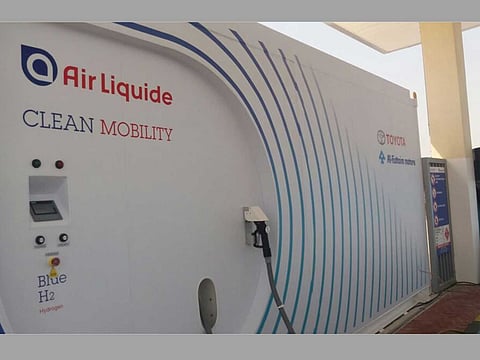Gulf economies are ready to take on clean energy and hydrogen projects
‘Green hydrogen’ will develop into next big thing – and Gulf states have funds for that

The global energy industry has seen its share of forecasts related to what could drive the next wave of growth – or even what hurdles are likely to come about in its way. This is where so much has been debated about the prospects for renewable energy projects and what role the Gulf oil producers will have in shaping such a future. Can Gulf economies make that transition to a clean energy future?
For example, hydrogen, which is one of the most important forms of that alternative energy in it two forms green and blue - is likely to be widely used in transportation, industry, fertilizer production and more. Hydrogen as a fuel is produced through electricity by chemically separating it from oxygen.
Green hydrogen is produced by using renewable energy sources such as solar, which does not result in pollution. Blue hydrogen is produced using fossil energy sources, but results in polluting emissions. No one can outdo GCC economies in hydrogen production given their access to solar energy and the fact that they have huge oil and gas reserves. c.
The UAE joined the Global Hydrogen Council and has developed a National Clean Energy Strategy 2050, where ADNOC produces 300,000 metric tonnes of hydrogen annually. This week, the Abu Dhabi energy giant exported the first cargo of blue hydrogen to Japan. The UAE has many new projects through global partnerships, such as the setting of a joint working group with Russia on hydrogen energy. And Dubai launched the first green hydrogen project of its kind in the region using solar power.
Seeding the Gulf
In Saudi Arabia, a green hydrogen project will be ready by 2025 with a capacity of 650 tonnes and 1.2 million tonnes of green ammonia, one of the largest such in the world, while in Kuwait, the National Petroleum Company (KNPC) has completed work on a hydrocracker unit at a cost of $16 billion that can produce 454,000 tonnes of clean fuel. Oman Oil Company, in cooperation with a group of foreign companies, is implementing a project to produce 1.8 million tonnes of green hydrogen at a cost of $30 billion using solar and wind energy.
These indicate GCC economies are battle ready to keep pace with rapid shifts in the global energy market and maintain their position as a source of both traditional energy and renewable energy. The development of hydrogen energy sources does not stop at the possession of oil and gas, but solar and wind power, which is abundantly available in all GCC countries.
This will lead to a logical question that there are other countries that enjoy sunny weather and seasonal winds. This is true, but the development of hydrogen energy needs massive investments. The GCC countries have the funds to set up these projects. The cost of producing green hydrogen is high compared to blue hydrogen, which gives the GCC countries an additional advantage.
Those who have energy sources should not fear what the future may hold if they develop the necessary programmes to meet those challenges. And harness their potential to develop alternative sources.
- The writer is a specialist in energy and Gulf economic affairs.
Sign up for the Daily Briefing
Get the latest news and updates straight to your inbox








